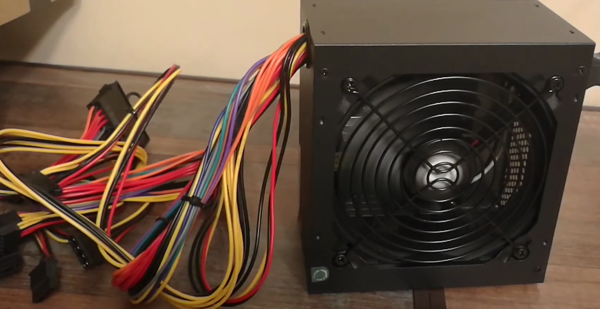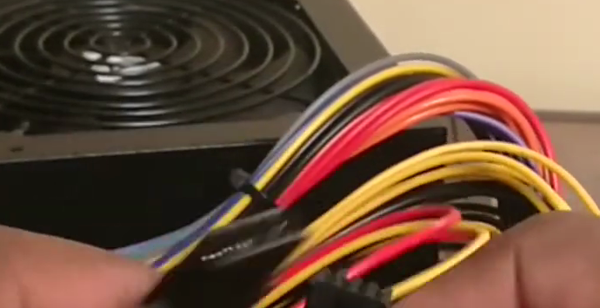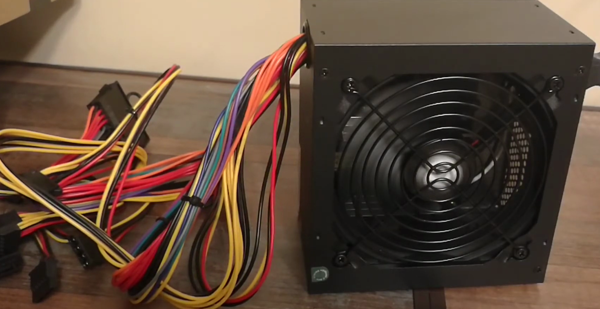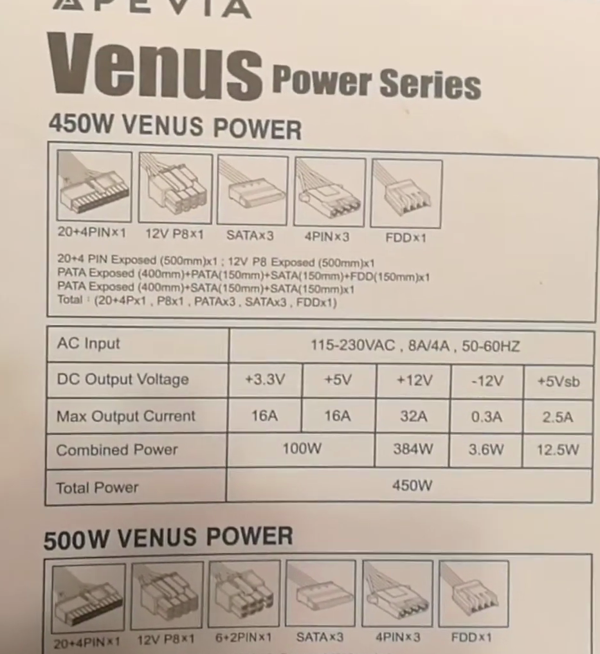Note: As an Amazon Associate I earn from qualifying purchases.
My thoughts on the APEVIA 450W ATX Power Supply Auto-Thermal 120mm Fan (2024)
Introduction
I recently tested the APEVIA VENUS450W 450W ATX Power Supply for a mid-range PC build. Affordability and various connectors drew my interest. Installation was straightforward. I examined its performance in various situations to assess capabilities and limitations.
Specifications
| Property | Value | Property | Value |
|---|---|---|---|
| Model Name | venus, venus450w | Brand | Apevia |
| Compatible Devices | Personal Computer | Connector Type | atx, floppy, sata, sata/3 |
| Output Wattage | 450 Watts | Form Factor | ATX |
| Wattage | 450 watts | Cooling Method | Air |
| Item Dimensions LxWxH | 5.9 x 5.5 x 3.4 inches | Item Weight | 1.18 Kilograms |
Photos
Click on photos to enlarge them:
Prices
Check prices of the APEVIA 450W ATX Power Supply on:
Product Specifications Overview

The Apevia VENUS450W power supply is a compact ATX unit offering versatility for various PC builds—at a glance, its specifications cater to the needs of most mid-range systems. The key aspects of the PSU are:
450 Watts output, suitable for systems without high-power components.
Multiple connectors, including 1 x 20/24pin main power, 1 x 8pin (4+4pin) 12V, 3 x SATA, 3 x Peripheral, and 1 x Floppy.
Auto-Thermally Controlled Black 120mm Fan which is a decent size for cooling and should help keep noise levels down.
115/230V Switch, offering flexibility for different electrical standards.
5% Tolerance on the 5V, 3.3V, & 12V output, which is within an acceptable range for stable operation.
Weight of 1.18 kilograms and dimensions of 5.9 x 5.5 x 3.4 inches, making it a good fit for standard ATX cases.
I appreciate the inclusion of protections such as Short-Circuit, Over-Current, Over-Voltage, Over-Power, Under-Voltage, and Over-Temperature. These safeguard the power supply and the connected components from various electrical issues. However, it’s crucial to mention that the power supply feels lightweight, which could be indicative of lighter-duty internals.
The Convertibility of the main connectors is a positive, allowing for compatibility with different motherboard power requirements. The 8pin CPU connector that splits into 4+4pin and the 24pin motherboard connector that becomes 20+4pin are thoughtful features for varying PC requirements.
Though the unit is advertised as operating with a 5% tolerance, I’ve found it to maintain voltage quite consistently, which’s beneficial for the longevity of PC components. This is based on my own stress testing where it showed impressive voltage stability.
The Apevia VENUS450W is not without its limitations. The lack of a PCIe connector might be a deal-breaker for those looking to use this power supply in a gaming PC or any system with a dedicated graphics card. Additionally, the cable lengths could be a concern for those with larger cases or meticulous cable management needs.
In conclusion, while this PSU wouldn’t be my first choice for a high-end gaming setup or for heavy-duty tasks like Bitcoin mining (as explicitly stated by the manufacturer), for basic builds or as a replacement power supply in older computers, it serves well. The affordability paired with essential features paints this unit in a reasonably positive light, despite its potential shortcomings in material robustness and cable length.
Installation and Connectivity Tips

Installing the APEVIA 450W ATX Power Supply was a straightforward process for me. The included mounting screws and power cable were a welcomed touch. However, one needs to ensure proper connector usage for optimal functionality and system stability.
Here are some noteworthy tips based on my experience:
Double-check Connector Types: With multiple connectors like 1 x 20/24pin Main Power and 1 x 8pin (4+4pin) 12V, it’s important to match these precisely to the motherboard’s requirements.
Pay Attention to Voltage Compatibility: The 115/230V switch must be set to correspond with your region’s voltage to avoid damage.
Cable Splitting: The ability to split the 8pin CPU and 24pin motherboard connectors offers flexibility for different motherboards. Make sure you carefully separate them to avoid damaging the pins.
Secure All Connections: Before powering on, I had to ensure all connections, including those of the power-on button, were secure and check the motherboard manual for any specific installation procedures.
While the unit’s light weight and shorter cables may indicate cost-efficiency in its build, it has not impacted its performance in my setup, where cable management was not an issue. However, cable length could be a limitation in larger cases or where meticulous cable routing is desired.
On the plus side, the auto-thermally controlled fan keeps things cool and quiet—a significant upgrade from the old power supply in this regard. The power supply has been consistent during stress testing, maintaining stable voltages without overheating, which is reassuring.
Here’s a quick roundup of my observations: Pros:
Straightforward installation
Flexibility with connector types
Stable voltage outputs
Quiet operation Cons:
Shorter cables may limit cable management options
Lightweight build could signal less robust materials
For hobbyists or those needing a power supply for basic builds or replacements, the APEVIA 450W unit is a value-oriented option that gets the job done. Yet, those with high-end gaming setups or complex systems might search for more premium options with extended features.
While there is no need for academic or research link references in this practical context, always consult the power supply’s official manual or manufacturer’s specifications for detailed installation guidance to prevent mishandling.
In my experience with various PC builds, the APEVIA 450W meets the needs of a standard desktop PC without frills. Caution is advised when using it for high-demand activities like gaming or cryptocurrency mining, as these could push it beyond its intended usage scope and potentially void the warranty.
Performance and Reliability Experiences

When it comes to evaluating the APEVIA VENUS450W 450W ATX Power Supply, my experiences have largely been positive, although it’s important to acknowledge some of the drawbacks that came along with it. Here’s a quick rundown of the highlights and potential issues I’ve encountered:
Positive Aspects:
Reliable performance under heavy load conditions.
Quiet operation thanks to the thermally controlled fan.
Good value for the price, especially for basic builds or replacements.
Variable connector options to fit different motherboard requirements.
Drawbacks:
Material quality feels very cost-efficient, which may impact long-term durability.
Short cables can limit options for tidy cable management.
Lack of PCIe connectors, which can be a downside for modern GPU compatibility.
Starting with the reliability, I found the power supply to be steady, and it handled a full suite of CPU stress testing without any voltage fluctuations. This is quite impressive and speaks to its robustness during rigorous applications.
The quiet operation is another significant advantage. The auto-thermally controlled 120mm fan does a great job at keeping the noise levels down, which is a blessing for any user who prefers a quiet working environment.
When considering value, I found this power supply to be a prudent choice for those on a budget. It’s a boon for simpler PC builds or when you just need a replacement that doesn’t break the bank.
The variability of connectors, like the split-able 8pin CPU and 24pin motherboard connectors, were particularly useful. This adjustability covers various motherboard specifications without the need for additional adapters.
However, on the flip side, the material choice does give me some concerns regarding how well it will stand the test of time compared to more robustly built units. Additionally, the short cables can be frustrating when trying to manage cables neatly inside the case, potentially affecting both aesthetics and airflow.
The absence of PCIe connectors might not affect a basic build, but for a modern gaming setup, it’s quite limiting, as it doesn’t accommodate the direct power needs of most contemporary graphics cards.
Overall, my experience with the APEVIA VENUS450W PSU suggests it’s a reliable power supply for standard computing tasks. It’s certainly not the top-of-the-line in terms of build quality or features, but for the price, it provides satisfactory performance. As with any budget-friendly option, its limitations should be weighed against the intended use case.
Adaptability for Various Uses

The APEVIA VENUS450W 450W ATX Power Supply has been a topic of contemplation for me, especially considering its adaptability for various uses. My experience is a mixed bag of sorts, and it’s worth noting the aspects that I find to be positive as well as those that could be potential drawbacks.
Positive Aspects:
Versatility: It supports a wide range of connectors, including SATA, Molex, and even a Floppy connector, which is great for legacy systems.
Flexibility: The ability to convert the 24-pin to a 20+4-pin and an 8-pin CPU connector to 4+4-pins is quite handy for different motherboard requirements.
Cost-Effectiveness: It’s competitively priced, which makes it an attractive choice if you’re on a budget.
Potential Drawbacks:
Limited Cable Length: The short cables may make it difficult for larger cases or intricate cable management.
Power Limitations: With 450 watts, it might not be sufficient for high-end gaming setups or powerful workstations.
No PCIE: The lack of PCIE connectors immediately rules out its use for most modern gaming GPUs, which is a significant limitation for gamers.
From a personal standpoint, the APEVIA VENUS450W is great when it comes to bringing an old PC back to life or for simple office computers that don’t require intensive power or expansive connectivity. I appreciate that it comes with all the necessary peripherals like mounting screws and a power cable, which simplifies the installation process. Its auto-thermally controlled fan keeps it cool and quiet, which is a plus point for any workspace.
However, there are areas where this power supply wouldn’t be my first choice. The lack of PCIE connectors is a considerable issue if you’re looking to build a gaming PC or use it for any graphics-intensive tasks. And while this power supply might feel ‘cost-efficient’ in its materials and build, that does raise some concerns for me regarding long-term durability and reliability.
In terms of adaptability, it has a solid range of protection features like over-current, over-voltage, and over-temperature, which gives me peace of mind for safety. However, the warning against using this unit for Bitcoin mining or other high-load situations indicates that its capacity to handle sustained heavy usage is limited.
The APEVIA VENUS450W earns points for its adaptability in certain scenarios—reviving older PCs or powering basic builds. However, for modern, high-performance tasks, it may fall short. While it may represent good value for certain applications, it’s important to be aware of its limitations, particularly concerning power-intensive components and future expandability.



